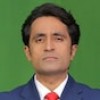Opinion | India’s Tariff Diplomacy: Strategic Autonomy In Fractured Global Order
In an era where tariffs have re-emerged as a weapon of choice in global diplomacy, India stands as a compelling case study of a nation that has not only safeguarded its economic interests but also transformed external pressures into opportunities for growth and strategic autonomy.
From Washington to Beijing, tariffs have transcended their traditional role as tools for resolving trade disputes, evolving into calculated instruments of geopolitical influence, economic resilience testing, and concession extraction.
Carnegie Endowment for International Peace has summarised this world order effectively, it says : The ‘global order’ is no longer shaped by alliances alone—it is shaped by the ability of nations to protect their own economic sovereignty. Under Prime Minister Narendra Modi’s leadership, India has navigated this volatile landscape with a blend of resolve, pragmatism, positioning itself as a pivotal player in a multipolar world.
Tariffs are far from a modern invention. Their use as instruments of economic protection and geopolitical leverage dates back centuries. The United States, for instance, passed its first tariff law — the Tariff Act of 1789 — within months of ratifying its Constitution. This act imposed duties of 5-10% on imports to shield nascent American industries from European competition, particularly British manufactures, while generating revenue for the fledgling republic. Similarly, Britain’s Corn Laws, enacted in 1815 and repealed in 1846, protected domestic agriculture from foreign grain imports, reflecting the economic nationalism of the era.
The 20th century saw tariffs fall out of favour during the high tide of globalisation in the 1990s. The establishment of the World Trade Organization (WTO) in 1995, coupled with a proliferation of Free Trade Agreements (FTAs) and multilateral pacts, relegated tariffs to the margins of economic policy.
However, the 21st century has witnessed a dramatic resurgence of tariffs among the architects of globalisation.
The U.S.–China trade conflict, initiated in 2018 with tariffs on Chinese goods, marked a turning point, signalling that economic coercion through trade barriers was back on the global stage. Similarly, disputes such as the U.S.–EU steel and aluminium tariffs (2018–2021) and Japan–South Korea technology export restrictions (2019–2023) illustrate how........






















 Toi Staff
Toi Staff Gideon Levy
Gideon Levy Tarik Cyril Amar
Tarik Cyril Amar Mort Laitner
Mort Laitner Stefano Lusa
Stefano Lusa Mark Travers Ph.d
Mark Travers Ph.d Andrew Silow-Carroll
Andrew Silow-Carroll Ellen Ginsberg Simon
Ellen Ginsberg Simon
